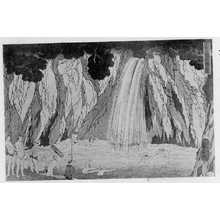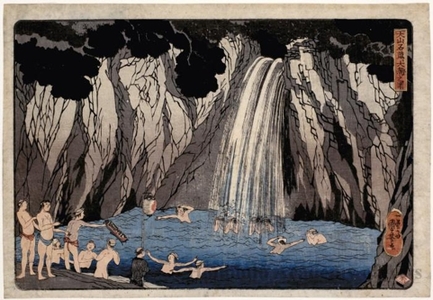歌川国芳による浮世絵「Great Falls of Sekison at Öyama」
作者:歌川国芳
作品名:Great Falls of Sekison at Öyama
制作年:c. 1839
詳細:詳細情報...
情報源:ホノルル美術館
浮世絵(全 5,476 件)を表示...
説明:
These partially clad firemen enjoy a dip at the Sekison waterfalls. Three of them (one on the side of the falls and two in the water) display single color tattoos across their backs and arms. While most of "polite society" in 19th-century Japan associated tattoos with the common man (such as carpenters or firemen), much of 20th-century Japan regarded tattoos as sinister symbols, worn by shadowy figures of the underworld. Although perhaps used in the earliest Japanese culture of the Ainu people, by the 18th century tattoos had been linked to the practice of marking criminals, thus their negative image. Firemen and carpenter guilds, however, regarded tattooing as a sign of manhood and used them to emulate legendary or historical heroes made famous in Kabuki theater. (2005)
類似の浮世絵

